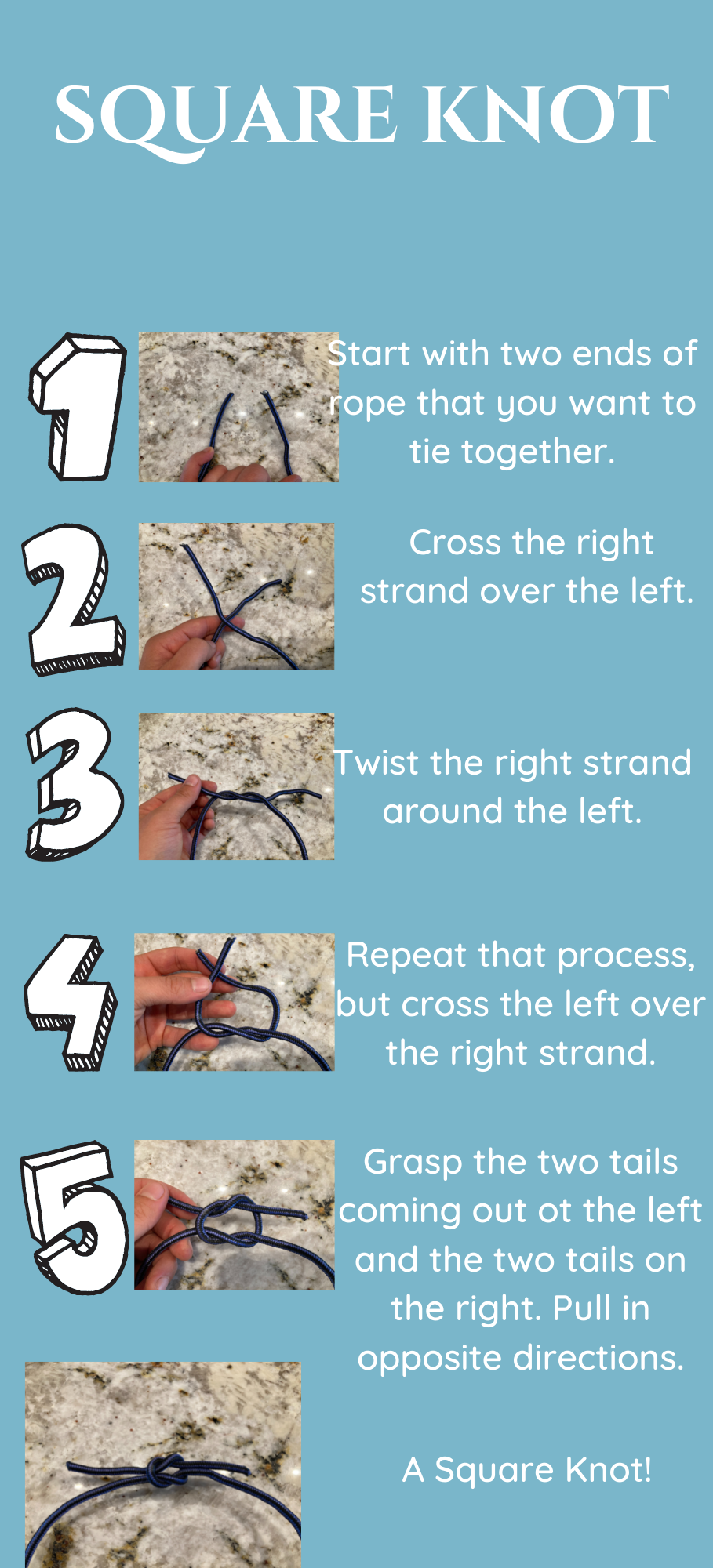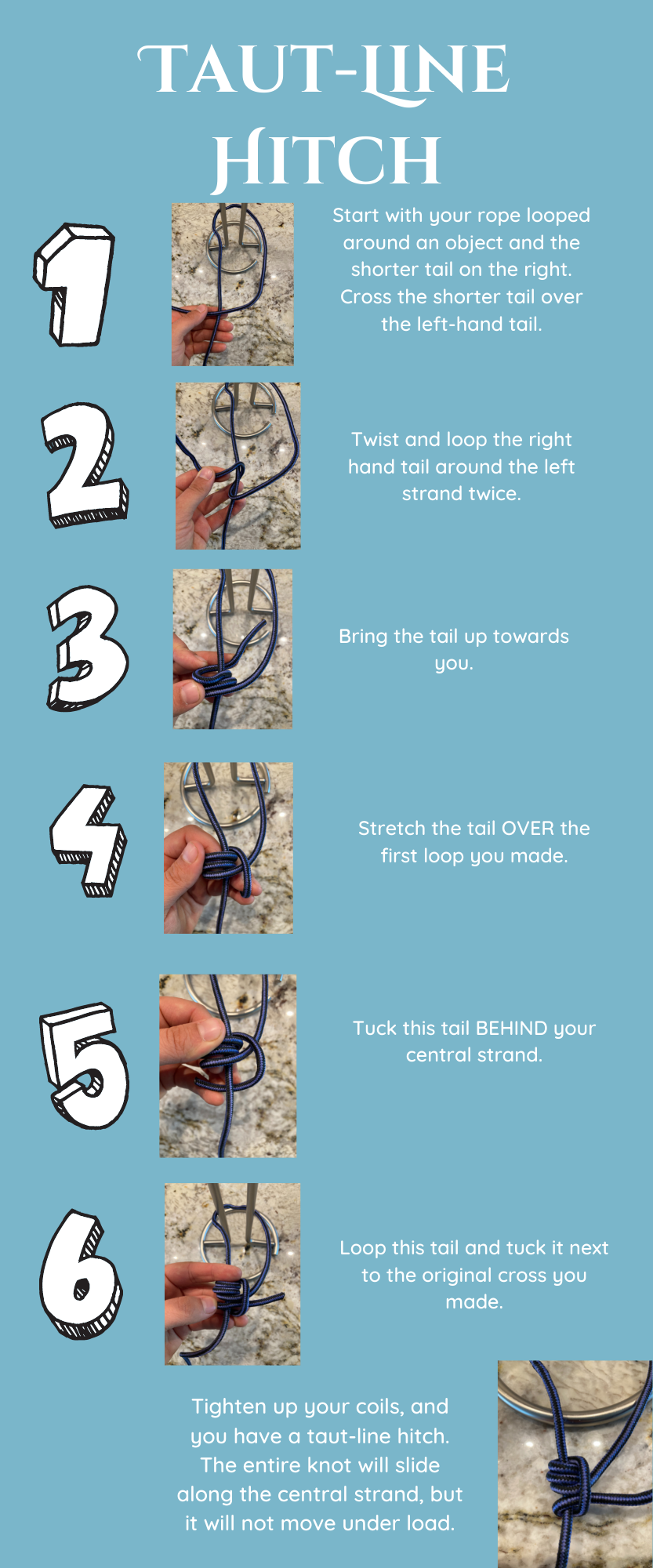4 Knots You Absolutely Need on a Homestead
Many people neglect the foundational skills when they dream and plan about their homestead. Sure, it’s hugely important to know the best ways to care for livestock, the importance of mulch in a garden, and how to save seeds from common flowers and vegetables. But it’s also important to study and practice skills that translate from the garden to the barn to the home. One of the most important of these skills is knot tying.
If you’ve ever had to secure tarps to withstand windstorms and heavy snowfall or tried to tie an animal’s lead rope, you know the struggles of trying to tie knots only to have them come undone, change the length of the rope as you tighten them, or tighten so much that it’s impossible to undo!
In this blog post, I’m sharing the secrets of veteran homesteaders that will make you a knot-tying pro and give you confidence to tie and secure anything on your property! This blog post will cover the following knots:
Square Knot
Bowline Knot
Taut-Line Hitch
Quick Release
For each knot I cover, I’ll be sharing:
When to use the knot
How to tie the knot
The best way to “break” or undo the knot
So if you’re tired of watching your knots fall apart or tired of using hand tools to loosen knots when you’re done with them (I’ve been there!), you’re in the right place. Read on to become a knot-tying pro!
Why Knowing the Right Knots Matter
I grew up with a strong Girl Scout background, and every year our troop would attend a jamboree where the different troops competed against one another in all sorts of events. One of the main events was always knot tying. Each troop had to have a girl tie the prescribed knots, and the fastest times won. Our troop always did pretty well in the knot tying event, but I never thought I’d actually USE that knowledge. We just wanted the blue ribbon!
Fast forward 15-20 years, and now I live on a modern homestead with gardens, chickens, horses, a pup, and all sorts of weather challenges. As time has gone on, I’ve found myself in situations where I’m delighted to solve a problem with a particular knot.
Need to connect another strand of baler twine to a strand you’re already working with to tie your tomato plant to its stake? Square Knot. Check.
Need to tie a loop in a knot to slip the dog’s rope over a post in the yard? Bowline. Check.
Need to anchor tarps to pallets to secure them through crazy weather and protect our hay? Tautline Hitch. Check.
Need to secure the fat horse to a specific spot to keep her from eating all of the skinny horse’s food? Quick Release Animal Safety Knot. Check.
Because I know these knots, I can efficiently and quickly accomplish tasks with the resources I have available to me. I don’t have to waste time retying knots or trying multiple times to make something just the right length. I’m confident that the knots I use will hold exactly how they’re supposed to, and I don’t have to waste time untangling endless loops and twists every time I’m done with a knot. And if there’s anything that can help me save time, I’m all in!
This post is a step-by-step tutorial of each of these knots so that you, too, can be confident and efficient in your homesteading journey!
Knot #1: Square Knot
This is a very basic knots, and many people learn it as a child. It’s easy to learn and to teach, and a great beginner knot. It’s named the square knot because when it is completed correctly, the knot formed is in the shape of a square. It is also called a Flat Knot, a Reef Knot, and a Hercules Knot.
When to Use
You should use the square knot when you’re trying to connect two pieces of cord that are a similar size. This knot can be used on a homestead to create a longer length of rope or to connect two items. I use it often in my garden when I’m staking and tying plants. This knot works on friction between the two ropes being joined, so it should not be used with particularly slippery ropes or ropes of very different diameters. The square knot is not an appropriate knot for any life-saving purposes.
How to Tie a Square Knot
How to Break a Square Knot
To break a square knot, you need to reduce the friction between the two ropes. Depending on how hard you tightened the knot, you may be able to simply slide the two bends of rope towards each other and loosen the knot that way.
If you want to go beyond the basics, purchase my ebook “Knots on the Homestead.” This book covers more varieties of the square knot and other knots that are appropriate to use in life-saving situations, such as the Figure-Eight Follow Through Knot. Click here for more information!
Knot #2: Bowline Knot
The Bowline Knot is designed to create a secure loop at the end of a rope. Minor variations of today’s bowline knots have been traced back to Egyptian times, and the bowline was originally used in sailing to connect sails to the main boat. This knot is extremely easy to break after being tightened, and is known for its safety, security, and ease of use.
When to Use
It is an extremely versatile knot for the homestead and can be used to create anchors for carabiners to clip into as well as making loops on the end of rope leashes and leads. The bowline is also great knot for when you’re working with a heavy load. It is easy to break after being put under a large strain, so it’s my favorite if I know that I’ll be pulling or hoisting something heavy with it. It is appropriate to use as a life-saving knot, and some climbers use the bowline to connect a ropes to their harness. This knot does require using the end of a piece of rope to tie, so if you’re working in the middle of a long rope, a Bowline On A Bight would be more appropriate.
How to Tie a Bowline Knot
How to Break a Bowline Knot
To break a bowline knot, simply pull the rope holding the tail and the loop together towards the end of the “bunny” end of the rope and away from the “tree” end of the rope. This will loosen the knot, and you will then be able to undo the knot.
If you want to learn even more knots to help get things done, purchase my ebook “Knots on the Homestead.” This book covers more varieties of life-saving knots and variations on the Bowline Knot such as the Bowline on a Bight and the Running Bowline. Click here for more information!
Knot #3: Taut-Line Hitch
The Taut-Line Hitch knot allows you to create tension between an object and an anchor and then adjust the amount of tension without untying and retying the knot! This knot is used to adjust the length of rope between a tent and the stakes, and we use it to secure tarps protecting our hay.
When to Use
A Taut-Line Hitch is useful for any situation where it matters how much length is left in the rope after tying the knot. With a tautline hitch, it is easy to adjust the knot until the rope is your desired length. This works particularly well when you’re securing something to stakes or anchors. You can tie the knot without any pressure, and then tighten the rope however much you’d like.
How to Tie a Taut-Line Hitch
How to Break a Taut-Line Hitch
To break a taut-line hitch, simply slide the knot toward the loop to reduce tension and pressure. Then, untwist the tail.
If you like the idea of knots that can be tied and then tightened or adjusted to suit the moment, you should purchase my ebook “Knots on the Homestead.” For only $0.50 per knot, you can learn more varieties of knots that easily adapt to a different situations, such as the Clove Hitch. Click here for more information!
Knot #4: Quick Release Knot
The Quick Release Knot is an animal keeper’s best friend. It allows you securely fasten an animal to a stationary object while still keeping safety in mind. If an animal pulls on the end of the rope connected to them, they simply tighten the knot. But in one tug, you can free your animal if an emergency arises.
When to Use and Cautions
This knot is a good knot to use when you’re trying to tie horses or other livestock so that you can groom, feed, and/or care for them. It can also be extremely useful if you’re trail riding and take a break OR any time you need to secure an animal while you walk away for a moment. This is not the sturdiest knot, however, so you should not use this in a situation where you want two things permanently attached.
How to Tie a Quick Release Knot
How to Break a Quick Release Knot
The best part about a Quick Release Knot is that it takes just one pull to completely undo this knot. Pull on the tail not connected to your animal, and watch the knot unravel!
So if you’re fed up with tying and retying knots only to fight with them later, it’s time to make a change. With a little bit of time and a rope (or even a shoelace!), you can use these steps to become a knot-tying pro. You’ll be confident that the knots you tie will perform as you expect, and you won’t ever have to wonder again if the knot you’re tying is going to slip or come loose. You’ll be able to easily untie knots, even after they are under extreme loads. These steps are so simple that you’ll even be able to teach children your new skills!
I want you to be free from knot-tying fear, and I know that you can master these knots and others! If you’re tired of pretending to know what you’re doing with ropes and dreading the detangling of knot messes, purchase my e-book, “Knots on the Homestead.” For only $0.50 per knot, you’ll be able to learn all of the knots I use on the Whistling Hen Homestead and watch video tutorials of how to tie each knot. Click here for more information!
The best way to increase confidence and ability is to learn new skills. If you’d like to empower those around you, fill out the form below to receive INSTANT access to my knot-tying printables about the four knots in this post. These are absolutely free to you so that you can help your friends, family, and youth organizations learn the useful skill of knot tying.






